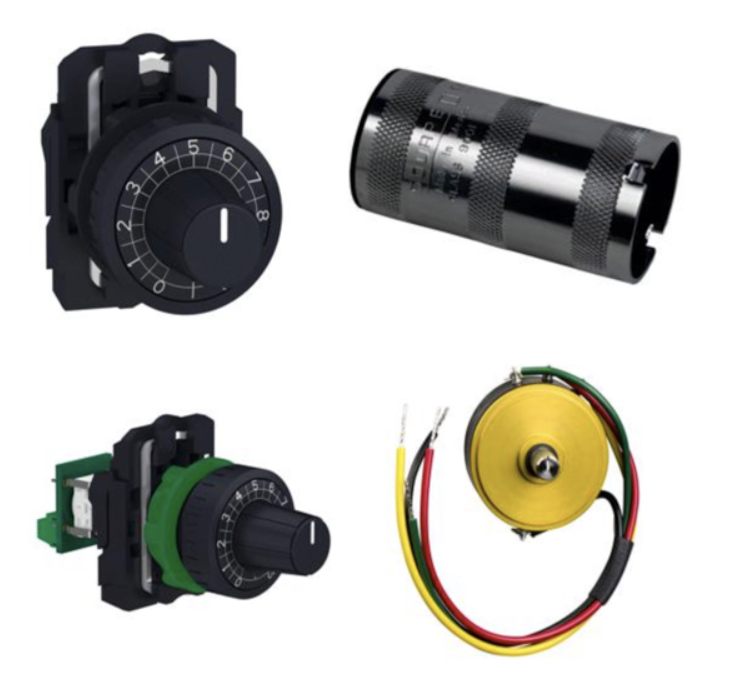Potentiometers

The most common of all types of potentiometers is the rotary potentiometer. These devices are used in motion control and electronic circuits to provide variable resistance or control inputs. What is truly remarkable about this type of potentiometer is its versatility; it can be used in applications as simple as household dimmers and volume controls, and as sophisticated as precision measurement devices. When we talk about precision potentiometers, we really should be talking about motion control systems. After all, in applications as diverse as sensors and measurement equipment, we are dealing with the need for accurate resistance adjustments to make an application work as desired.
There are single-turn and multi-turn potentiometers that serve specific needs in various applications and industries. What they all have in common is the ability to provide accurate control over electrical parameters—a necessity not only in audio systems and lighting applications where humans interact with the controls directly, but also in many advanced electronic control systems where such parameter-setting devices are not seen but are nevertheless essential.
More Information about Potentiometers
Potentiometers are used to vary total resistance within a circuit. That allows for the control of current and voltage. A potentiometer is an adjustable voltage divider. You have a fixed resistance and an adjustable contact. Potentiometers are linear. With linear taper potentiometers, you get a direct correlation with the position to the resistance that you are altering. So they are smooth and predictable. You don't get any surprises with them. You can also adjust the resistance in a non-linear fashion. Logarithmic taper potentiometers are used for that. You will see them a lot in audio equipment, like for adjusting the volume.
FAQs
What is the resistive element and resistance value of analog potentiometers?
The resistive element in analog potentiometers is typically made of materials like carbon or conductive plastic, and the resistance value can range from a few ohms to several megaohms, depending on the application.
Do rotary potentiometers have a sliding or rotating contact with a variable resistor?
Yes, rotary potentiometers feature a rotating contact that moves along a resistive element, acting as a variable resistor to adjust resistance.
Do potentiometers control analog signals with a sliding contact and what is the output voltage?
Yes, potentiometers control analog signals using a sliding contact (wiper) across a resistive element, producing an output voltage that varies proportionally between the input voltage and ground.
Maintaining NEMA 4 Rating When Making Enclosure Penetrations
Cutouts are very common when modifying enclosures for push buttons, indication lights, conduit entries or mounting hardware. Cutting into an enclosure runs the risk of eliminating the protective nature of the NEMA rated attributes. Proper steps must be followed in order to preserve the NEMA rating of an enclosure.
Devices mounted to the enclosure must have the same NEMA rating as the enclosure.
This means that if the devices are installed to the manufacturer's specifications, they will be able to maintain the NEMA rating of the enclosure.
Water tight conduit hubs must be used when running wire through a cutout in an enclosure.
There are many different types of conduit hubs that are used to secure conduit to an enclosure. However, only certain conduit hubs are rated for a watertight seal. By using water tight hubs, the NEMA rating of the enclosure is maintained.
Bonded washers are necessary when mounting hardware to an enclosure.
If standard mounting hardware is used, the NEMA rating of the enclosure will no longer be maintained. Bonded washers have rubber gaskets that make a watertight seal around the drilled hole. It is also important to make sure the material used for the bonded washer matches the material of the enclosure. Stainless steel enclosures require stainless steel bonded washers.

